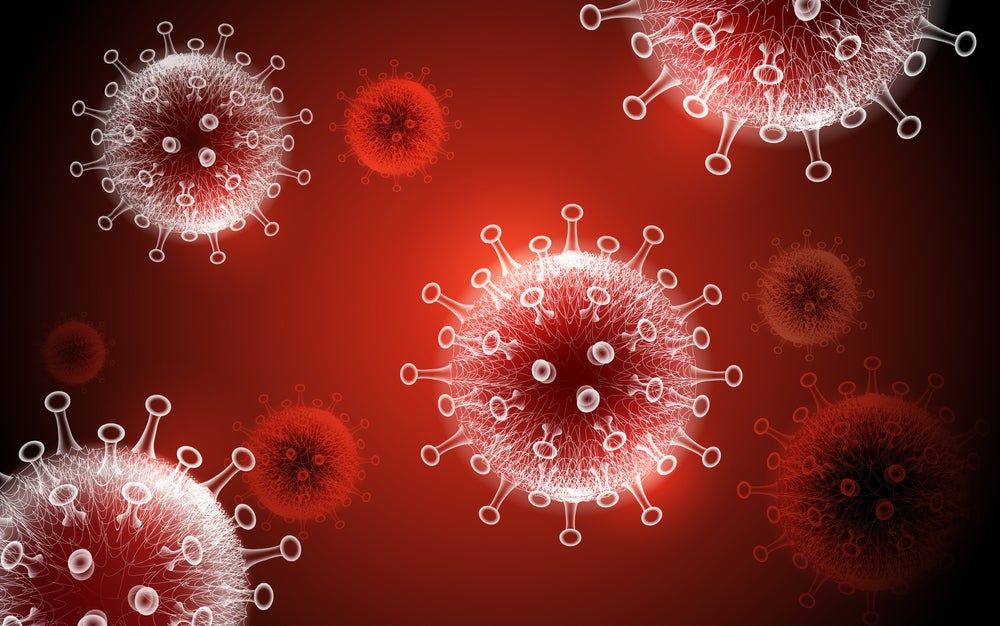
The first of the National Institute of Allergy and Infectious Diseases’ (NIAID) Covid-19 research priorities is to improve understanding of the disease and the novel coronavirus that causes it, SARS-CoV-2. This helps with understanding the transmission of the disease, including determining whether it is likely to be seasonally circulating, as well as why Covid-19 so dramatically affects some individuals, while others remain asymptomatic.
But better knowledge about the virus and the disease can also support the identification of new drug targets or which existing drugs could help tackle this viral disease. Drugs are essential to stopping more suffering at the hands of Covid-19; at the time of writing, more than 206,000 people have tragically died from the disease globally, according to GlobalData’s coronavirus dashboard.
All viruses have different structures that impact how they infect and enter people’s cells and then reproduce. Coronaviruses use a so-called ‘spike protein’ as one method to invade patients’ cells – this is where they get their name, as ‘corona’ means crown in Latin – however, each virus in that class has a slightly different-shaped protein.
In mid-March, National Institutes of Health (NIH)-funded scientists at the University of Texas at Austin mapped the molecular structure of the SARS-CoV-2 spike protein using cryo-electron microscopy with the aim of supporting both vaccine and drug development. They found it was similar to the SARS-CoV virus, which was responsible for the 2003 SARS outbreak; researchers in China had already shown both SARS-CoV and SARS-CoV-2’s spike proteins attached the same receptor, ACE-2, to invade patient’s cells.
3D modelling of the Covid-19 spike protein
Knowing the 3D structure of the interaction between ACE-2 and the spike protein means “we can make highly accurate predictions as to which molecular shapes can fit into pockets of that interaction to disrupt it or prevent it completely”, notes ImmunityBio chief scientific officer Shahrooz Rabizadeh, therefore “we may either find that currently approved drug molecules could work to fight Covid-19 infection, or novel drug candidates would be made.”
How well do you really know your competitors?
Access the most comprehensive Company Profiles on the market, powered by GlobalData. Save hours of research. Gain competitive edge.

Thank you!
Your download email will arrive shortly
Not ready to buy yet? Download a free sample
We are confident about the unique quality of our Company Profiles. However, we want you to make the most beneficial decision for your business, so we offer a free sample that you can download by submitting the below form
By GlobalData“Once a therapy targeting the spike protein is developed, it will block viral entry into a human cell, which would stop or substantially slow down further spread of the virus to other cells and make the disease progression much milder and easier to treat,” Rabizadeh explains. “In addition, any damage to the lung tissue would be far less severe.”
A 3D model of the protein could also support vaccine development.
“The spike protein may act as an antigen forming the basis of a vaccine: isolated spike protein or its fragments administered to a healthy person would not cause infection, but rather would promote the body’s development of specific antibodies against SARS-CoV-2,” says Rabizadeh.
ImmunityBio and Microsoft collaborate to support research
Supporting Covid-19 drug and vaccine development is the aim of ImmunityBio’s collaboration with Microsoft to leverage the latter’s Azure platform to create a 3D model of SARS-CoV-2’s spike protein. It built upon the work of the NIH’s digital blueprint of the spike protein, but applied molecular dynamics to atomically analyse the physical movement of the virus. By working together, Rabizadeh claims, it allows “us to produce highly accurate models of large protein complexes in a matter of days or weeks instead of months.”
This is the first collaboration of this kind between ImmunityBio and Microsoft, and they are still working to complete molecular dynamics analysis, which “includes modelling of chemical compounds in search for potential drug candidates”. The plan is to publish studies in peer-reviewed journals so data and insights can support other researchers in their Covid-19 work.
Looking to the future, ImmunityBio believes there is “enough motivation on both sides” to continue to expand its partnership with Microsoft. “Right now, many lives depend on how quickly effective therapies are developed, and speeding up this discovery process is our highest priority,” Rabizadeh concludes.
However, since ImmunityBio is a pharmaceutical company it is also focused on collaborations specifically to develop new drugs against Covid-19. For instance, it is working with its sister firm NantKwest to advance immunomodulatory drug candidates based on the latter’s off-the-shelf natural killer cells into clinical trials.
Patient-specific modelling to support studies
Computational modelling has uses in the battle against Covid-19 beyond analysing the structure of the virus itself. French artificial intelligence start-up ExactCure is seeking to model and predict the efficacy and pharmacokinetics of already approved drugs being studied for Covid-19.
By creating general simulations based on patients’ age and weight, “pharmacologists [can] adjust dosages depending on the patient” for emergency use of certain drugs and “in cohorts management [they can] to spot outliers much earlier and pay specific attention to them before they jeopardise the whole trial”, the company’s co-founder and chief business development officer Fabien Astic says.
ExactCure has started to simulate two drugs being repurposed for Covid-19 to date: anti-malarial hydroxychloroquine and lopinavir/ritonavir, a protease inhibitor combination indicated for HIV.
However, the start-up is building on this work through a recent partnership with analytics company Elsevier to leverage its PharmaPendium database of US Food and Drug Administration (FDA) and European Medicines Agency (EMA) approval documents to allow state-of-the-art models for 20 drugs and the integration of more personal parameters.
The ultimate aim of ExactCure is to create personalised models of individuals to simulate “the efficacy and interactions of medicines in the body of a patient based on his/her personal characteristics”, Astic explains. However, “we would need dozens, hundreds of or even thousands of parameters to build an almost perfect digital twin of each patient; ExactCure will work on this in the future, but for now it is still unpractical and unachievable”.
Nonetheless, the less personalised models are incredibly useful for ongoing trials of Covid-19 drugs. Astic states: “Hopefully patients hit by Covid-19 around the world will benefit from this faster and richer model creation.”







